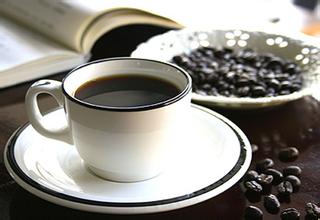Introduction to the flavor and taste characteristics of Panamanian boutique coffee bean manor
The story starts from the last century and from the digging of the Panama Canal. This maritime traffic route, on a par with the Suez Canal, and the geographical dividing line between North and South America, should also be the first landmark that comes to mind when the world talks about Panama.
The construction of the Panama Canal lasted 30 years from 1883 to 1914. The project was initially led by the French, and then the development rights fell to the Americans, during which as many as 50,000 craftsmen and technicians were employed, many of whom were engineers from northern Europe. Toleff Bache M ö nniche is one of them.
The Norwegian engineer, who graduated from Dresden College in Germany, was in charge of gate technology at the port of Cologne on the Panama Canal. Tropical rain forest climate in Panama, hot and humid and mosquito ravages make it difficult for many Nordic people to adapt, continue to suffer from disease, many people died as a result. In 1911, Toleff Bache, who had suffered from malaria for the fourth time, took a steamboat along the Pacific coast to Bopquete, a small town in Chiriqui province, where the dry climate and fresh air allowed him to recover. Deeply in love with the land, he returned here in 1924 with his wife Julia and bought a piece of land at the foot of the Baru volcano, what is now Lilida Manor. They built their own house here, a Nordic-style building, and have lived here ever since, and started the management of the coffee farm.
In the Pokuit producing area, there are also many excellent manors, except the famous Emerald Manor, Alida Manor, Aqaba Manor and so on, all of which produce high-quality boutique coffee. This is not only due to the superior ecological conditions of the Pokuit region of Panama and the fertile volcanic ash soil of the Baru volcanic land. Another important factor is that the microclimate in the Poquet Heights of Panama is a unique and important resource for boutique coffee in the Pokuit region. This is the Panamanian environment from east to west that allows cold air to converge above 6500 feet through the Central Mountains, thus creating a variety of microclimates in the Pokuit region, making its temperature and rainfall very suitable for plant growth. so the coffee trees grown here grow very well.
In Poquet's unique planting environment, there is naturally not only the rose summer of emerald, the king of coffee, regardless of flavor, quality and value, but I think it is quite extravagant to drink rose summer every day, and even if there is no economic pressure, it is not like eating shark's fin and bear's paw every day. The same is true of coffee. It takes a wide range of people to enjoy the pleasure of tasting coffee. The species of Geisha was discovered in the rose forest of Ethiopia in 1931 and sent to the Coffee Research Institute in Kenya. It was introduced to Uganda and Tanzania in 1936, to Costa Rica in 1953, and to Panama in the 1970s by Mr. Francis Coselazin of Dongba Seven Farm Garden, who received seeds from CATIE in Costa Rica and began to grow Rose Summer Coffee.
Geisha, sweeping the coffee world with the power of a hurricane, the coffee revolution is so fierce that the blue mountains of Jamaica and Kona of Hawaii, which have long occupied the throne of the coffee kingdom, have to stay away. This wild species, which originated in Ethiopia, is now widely used in major coffee producing areas after numerous battles, and its best spokesman is the "LaEsmeralda" estate from Panama.
History of Esmeralda Farm: founded by Hans Elliot, a Swede, in 1924, Esmeralda Farm was not a coffee grower but a ranch. Forty years later, in 1964, Mr. Danielupidason's grandfather, Ruth Lover. Mr. Bidasson bought Esmeralda Farm in order to have an old home after retirement. His grandfather, Mr. Ruth Lover Bidasson, was born in Sweden and was president of the Bank of America and director of United Nations development. His son, Mr. Brais Bidarsson, moved to Panama from California in 1973 and inherited to run his father's farm. In 1987, most of the farms were changed to grow coffee. In 1994, he invested in the machinery and equipment of refined coffee in order to create a brand. Mr. Brais Bidarson and his wife Susan also raised three children, Elligu (born in Philadelphia in 1966). Rachel (born in Sweden in 1967), Danielu (born in Panama in 1974)

Important Notice :
前街咖啡 FrontStreet Coffee has moved to new addredd:
FrontStreet Coffee Address: 315,Donghua East Road,GuangZhou
Tel:020 38364473
- Prev

Introduction to the characteristics of the manor producing area with the flavor of Salvadoran coffee
El Salvador, located in the northwest of Central America and bordered by the Pacific Ocean to the south, is one of the birthplaces of the ancient Mayan civilization. The nearby volcanoes, plateaus, lakes and bathing beaches along the Pacific coast are all very pleasant. But El Salvador is most famous for its unique, mild-flavored coffee. El Salvador is one of the small countries in Central America with a very dense population. this
- Next

Indonesian Mantenin Coffee Estate with a hint of wood and herbs
Mantenin name origin: first appeared after World War II, the Japanese mistakenly planted coffee Mandenin people, pronounced Mantenin, still in use today. Mantenin's main production areas are Aceh and North Sumatra provinces, where Arabica production accounts for 85% of Indonesia's total Arabica production. Sumatra coffee, as it is called in the fine coffee world, also refers to these two regions. finer
Related
- Detailed explanation of Jadeite planting Land in Panamanian Jadeite Manor introduction to the grading system of Jadeite competitive bidding, Red bid, Green bid and Rose Summer
- Story of Coffee planting in Brenka region of Costa Rica Stonehenge Manor anaerobic heavy honey treatment of flavor mouth
- What's on the barrel of Blue Mountain Coffee beans?
- Can American coffee also pull flowers? How to use hot American style to pull out a good-looking pattern?
- Can you make a cold extract with coffee beans? What is the right proportion for cold-extracted coffee formula?
- Indonesian PWN Gold Mandrine Coffee Origin Features Flavor How to Chong? Mandolin coffee is American.
- A brief introduction to the flavor characteristics of Brazilian yellow bourbon coffee beans
- What is the effect of different water quality on the flavor of cold-extracted coffee? What kind of water is best for brewing coffee?
- Why do you think of Rose Summer whenever you mention Panamanian coffee?
- Introduction to the characteristics of authentic blue mountain coffee bean producing areas? What is the CIB Coffee Authority in Jamaica?

